My flight was marginally delayed arriving into Cairo just after 20:00 (London to Cairo via Istanbul; 1hr20min stopover). The airport was good, the visa palaver is a little odd to say the least; it seems so disorganised yet much quicker than applying for the visa prior to leaving – no proof accommodation, flight ticket etc., pay US$25 and you get a sticker to put into your passport (British passport). I had arranged a transfer from the hotel to my airport, thankfully I did, outside the airport is chaos and if I knew I would have paid double the £21 that I did!
The drive from the airport to the hotel was an experience itself, I pity anyone who arrives in Cairo for the first time and has hired a car, you may as well buy a coffin at the same time. I kept laughing during the journey, a relieved come nervous come astounded laugh and as my driver didn’t speak a word of English I think he may have thought there was something wrong with me. For a very brief description; no street lights and a road that should be about four lanes at most fits six, seven, eight cars dependant on the size of cars or how close they want to drive to the car next to them…this is not always in your hands. A car without any dents sticks out like a sore thumb, that’s no exaggeration! Hooters as I learnt during my travels are used quite differently in countries, here in Egypt they have evolved the hooter to a new level. They use it more than indicators, it’s possible the most used function of the car bar the accelerator; you hoot to tell people you want to squeeeeze into a space, that you want someone to more over (most roads don’t have painted lanes), just to tell someone you are next to them, will be next to them, want to be next to them, that you don’t want them next to you and some of the times I don’t even know why they are hooting. Tuk Tuks, motorbikes (no helmets and passenger numbers is determined by how tight your grip is – the most I saw was five; husband, wife, two kids and a baby which the mother was holding), bicycles (these must be either the bravest or dumbest people on earth) and donkey-draw carts seem be able to go in any direction on any road but you must hoot at them. You can also pull over anywhere but must hoot and you will also be hooted at. Oh yes, pedestrians cross anywhere and everywhere and if you can’t stop you blow the hooter and they either run or stop in the middle of the road or you just slam on brakes whilst you hoot, people behind and around you will hoot too.
I got to the hotel still chuckling, ordered food and went to bed, the next day I would finally get to see the Giza Pyramids.
Go straight to my trip to Giza or carry to read about my time in Cairo…
City of the Dead / Cairo Necropolis / Qarafa-, el-Arafa
A very well-known area of Cairo but seldom visited by tourists, there are a couple of reasons why; it’s not in the best of areas, although within the city the location is not easy to get to, if you don’t know about it you wouldn’t know it’s there and even if you did it is so big you wouldn’t know what to go see and where it is. The area combines mostly the very poor living along and in between a necropolis of mausoleums and tombs the inhabitants a more recent occurrence driven in large part because of economical reasons. Colloquially known as el’arafa it is 6.4km long North-South, I have no idea how wide and densely filled in what was a grid now overflowing on top of each other. It has been in existence since around 642 AD when Egypt was conquered during the Muslim Conquest which went around the Mediterranean and as far as Portugal and Spain (take a look at my visits to Portugal and Spain) and lasted in Europe for almost 700 years.

Hosh al-Pasha
My driver took me inside the area and I confess I was a little concerned as to where we were going but I’m glad he did. The Hosh al-Pasha is a monument inside the City of the Dead and seldom visited, going inside this is plainly evident; the tomb is dark and everything is covered in a thick layer of dust. The name of the tomb means courtyard of the Pasha, a name given to Royal family graveyards but more specifically the descendants of Mohammad Ali (Mohammad Ali Pasha al-Mus’ud ibn Agha – the same person who built the famous Mohammad Ali Mosque in Cairo). Mohammad Ali was Persian and Pasha means King but was also given as a title to very high officials in the Ottoman Empire and to Governors of some of the lands they conquered and controlled. His children, his wives (he had many), some servants and senior officials are buried in this tomb.
An interesting story I heard about Mohammad Ali; there used to be 40 Kings within what is now mostly known as Egypt. He invited them over to his palace for a party and there he killed them all and became the first individual ruler of Egypt and to some degree is seen and the founder of current Egypt in the early 19th Century.
The tomb in unmistakably Islamic and a beautiful building in amongst what many may describe as squalor – maybe not that bad. The pictures I took really don’t do it justice, I would have needed a much bigger camera flash to light up this large and dark area. Even so, what at face value seems grey and brown lights up into an array of bright white marble, gold, yellow, green, blue and red decoration. I was told that the “kings” he killed are also buried here; there tombs elaborately decorated but not to the extent of Mohammad Ali’s family.
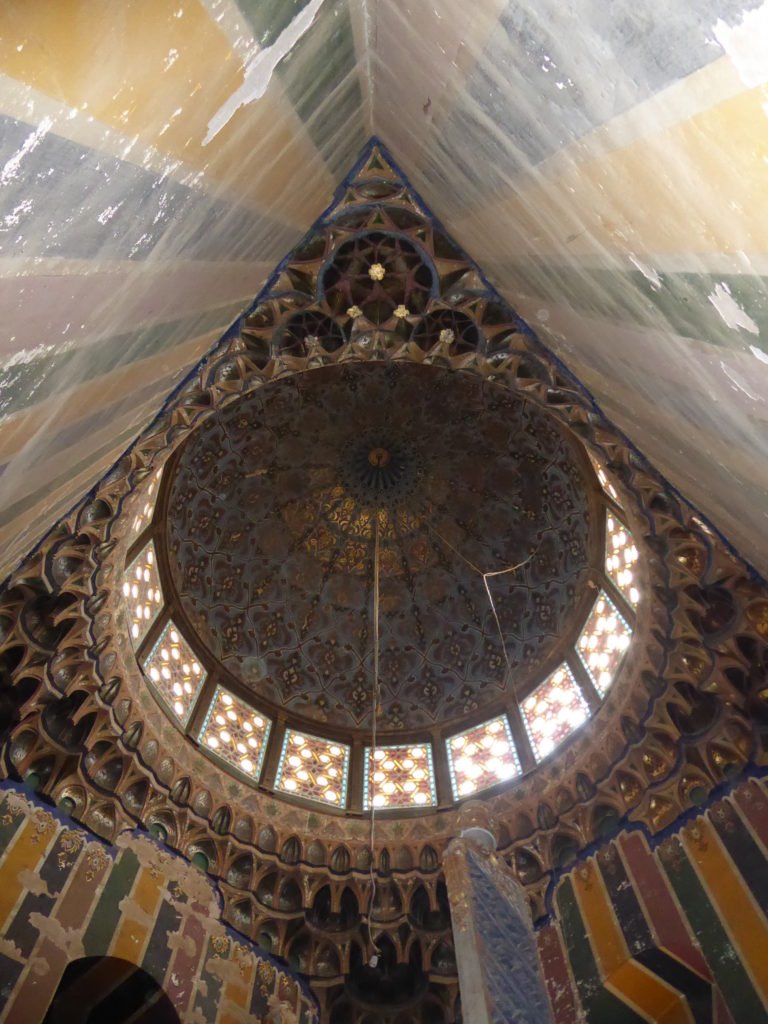
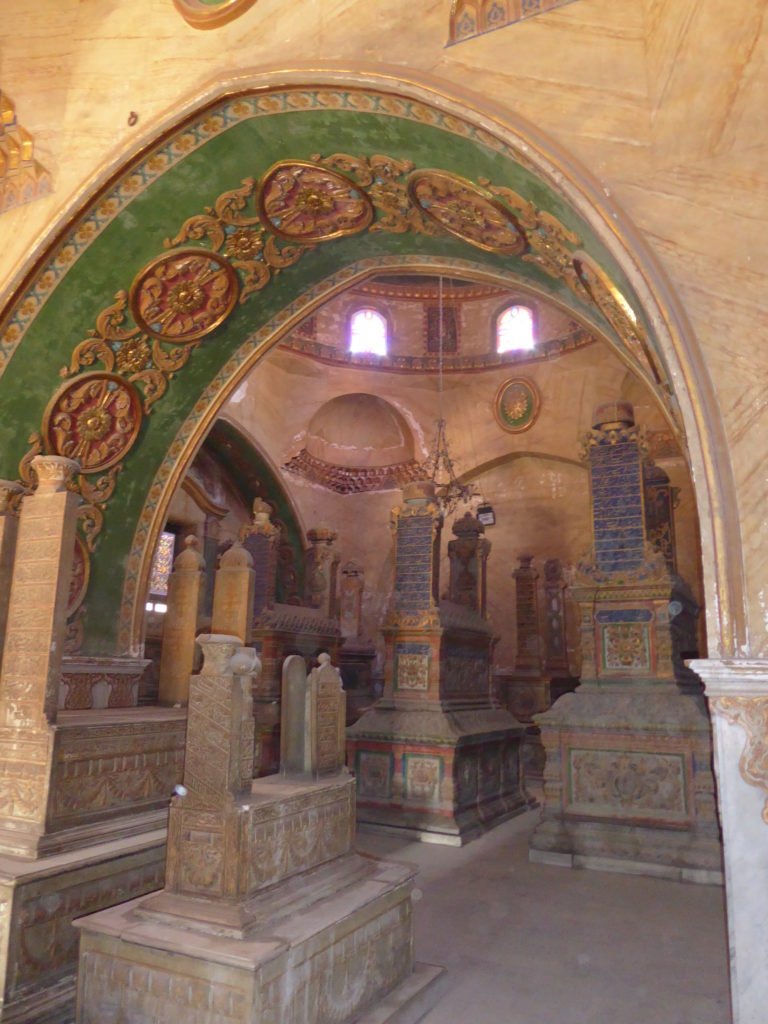

There are some with multiple “turrets” and I was told that each turret represents a person – each person has a turret on either side of the tomb; the tops of these turrets indicate rank and sex. Men have turbans &/or fezzes and women by coronets and sometimes braided or platted hair.
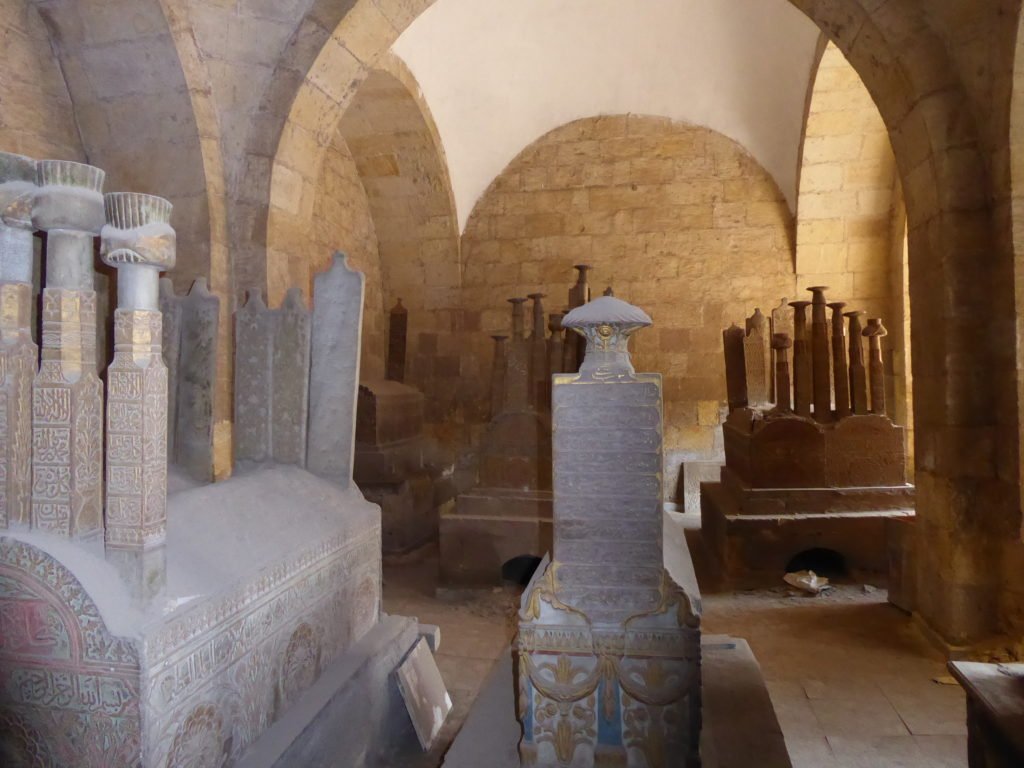
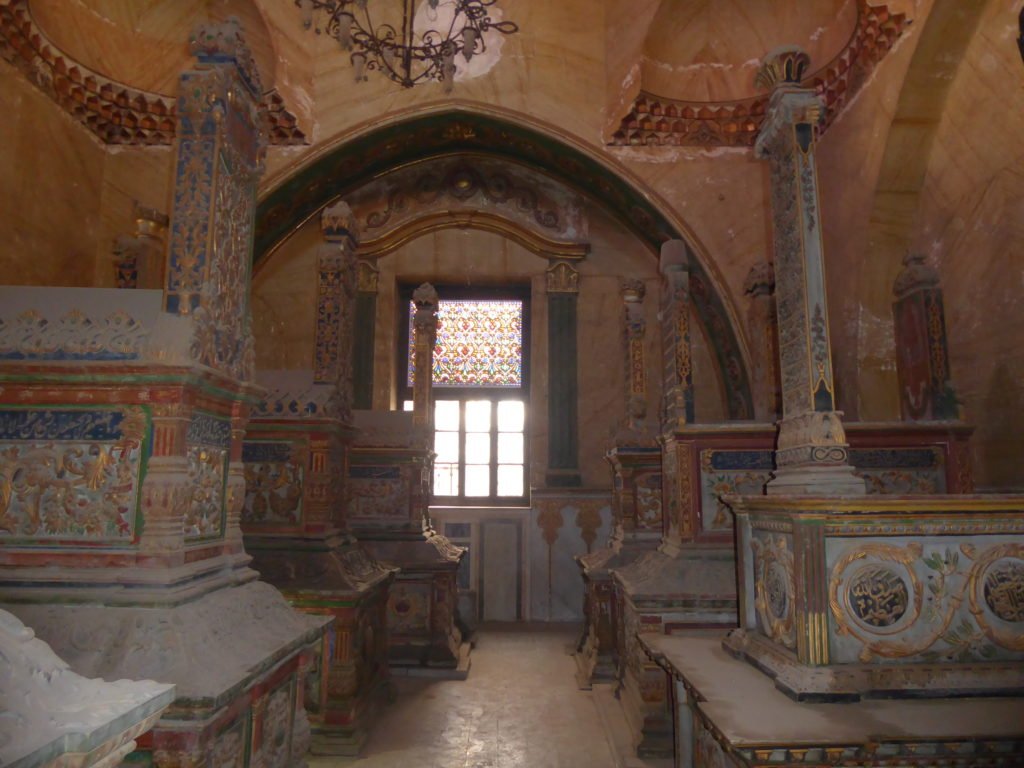
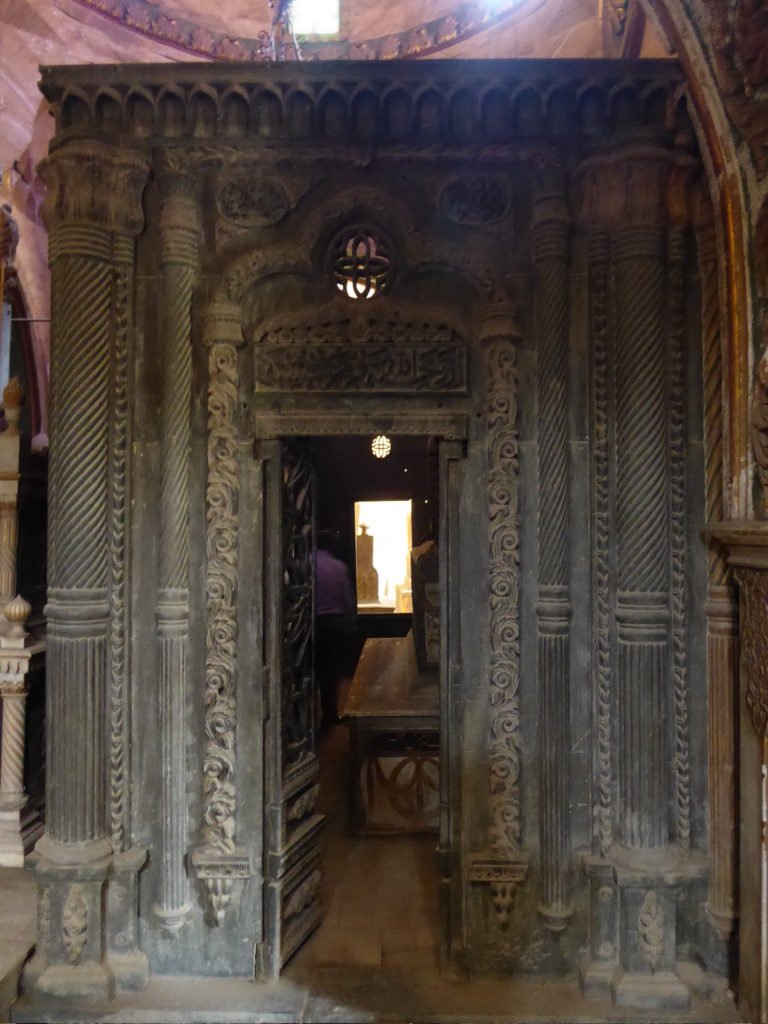
The Tombs of his family are especially extravagantly decorated; made of carved white marble and painted in the brightest of colours. At first glace I thought they were wood because of the paint, who would paint and hide such intricate carved marble (all the way from Italy!). His eldest son’s tomb is by far the most spectacular; it took one man 4yrs to complete and the result was so magnificent and the best work Mohammed Ali had ever seen. He never wanted anything to be produced that could better or even matched this masterpiece so he cut the sculptors one hand off! The workmanship is outstanding, even more so with this tomb the paint detracts from the detail and much have look staggeringly beautiful before it was painted.
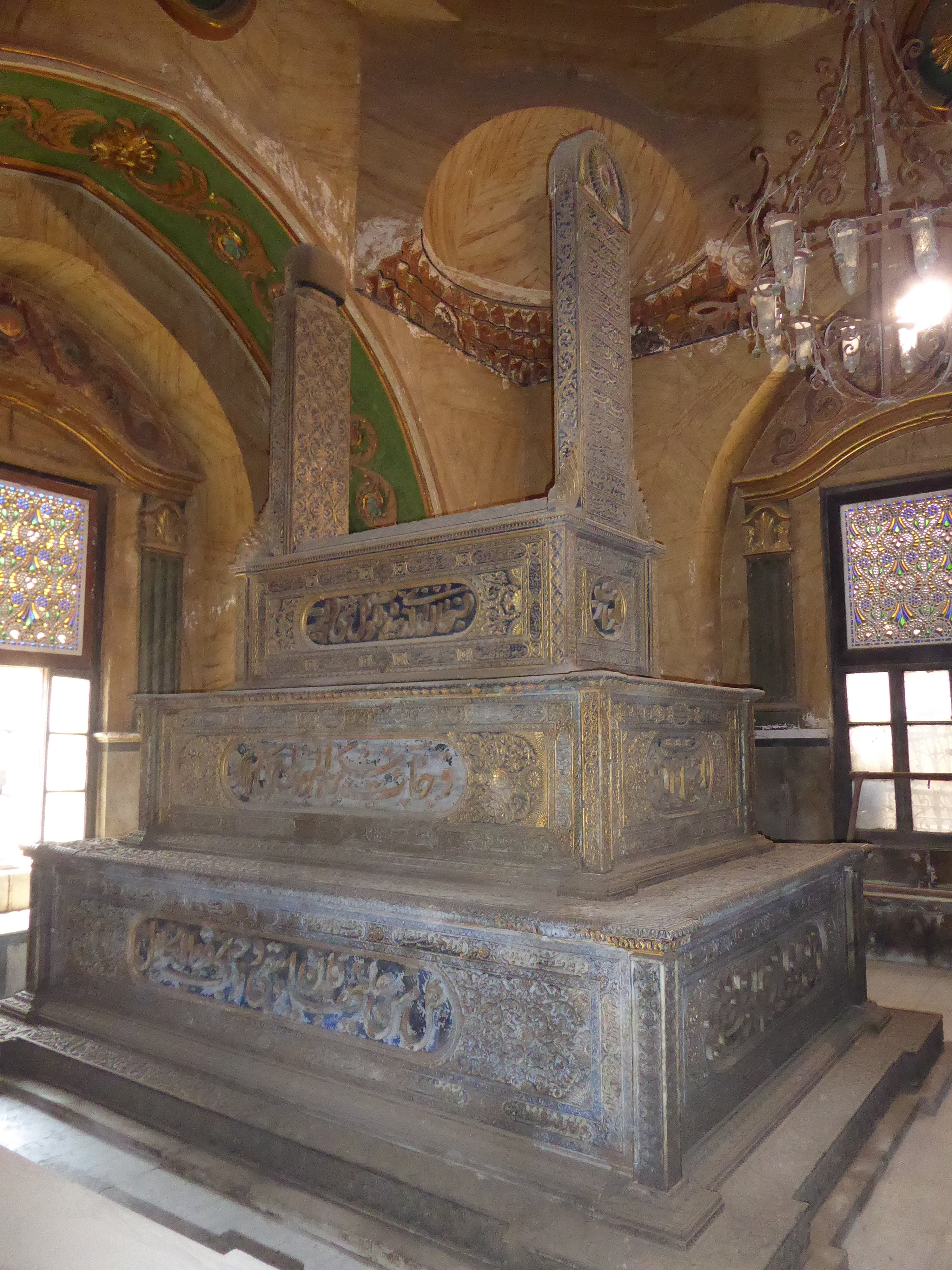

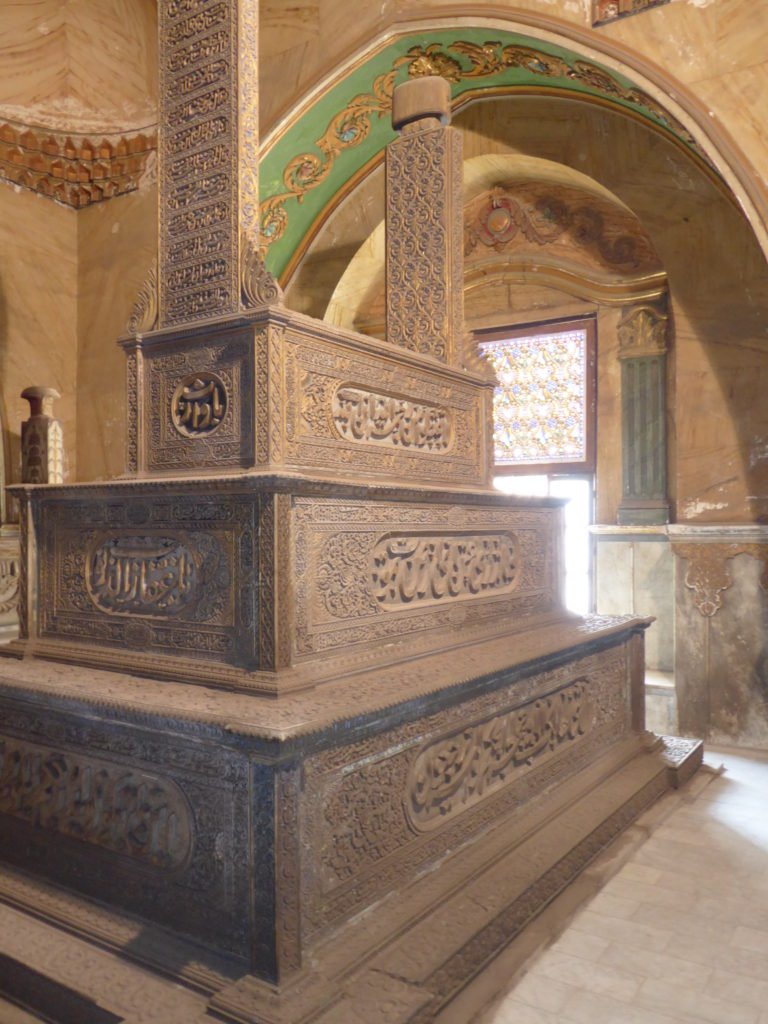
Like I said this tomb is nothing like I have been into before not just the colours the whole style, feel and aesthetics, if you get the opportunity to go do it. I was luckily enough to get onto the roof top through a little spiral staircase where you can get amazing views of the city and Mohammed Ali Mosque perched on the highest point in Cairo. Even at such a distance it is a big imposing structure looking down on the city. For this vantage point the skyline is scattered with domed rooftops of every size imaginable.

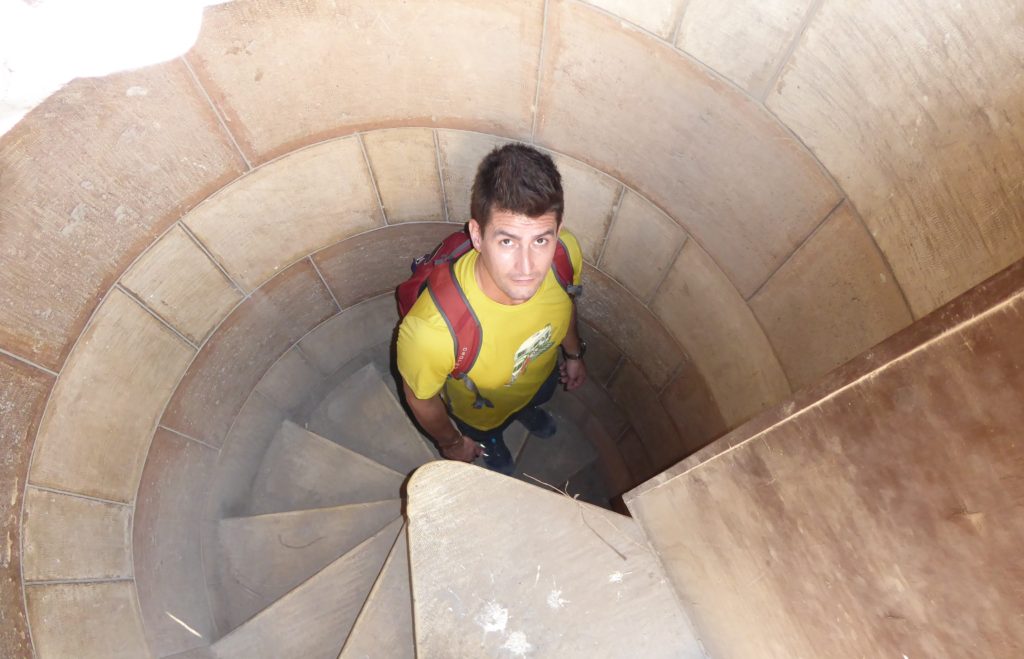
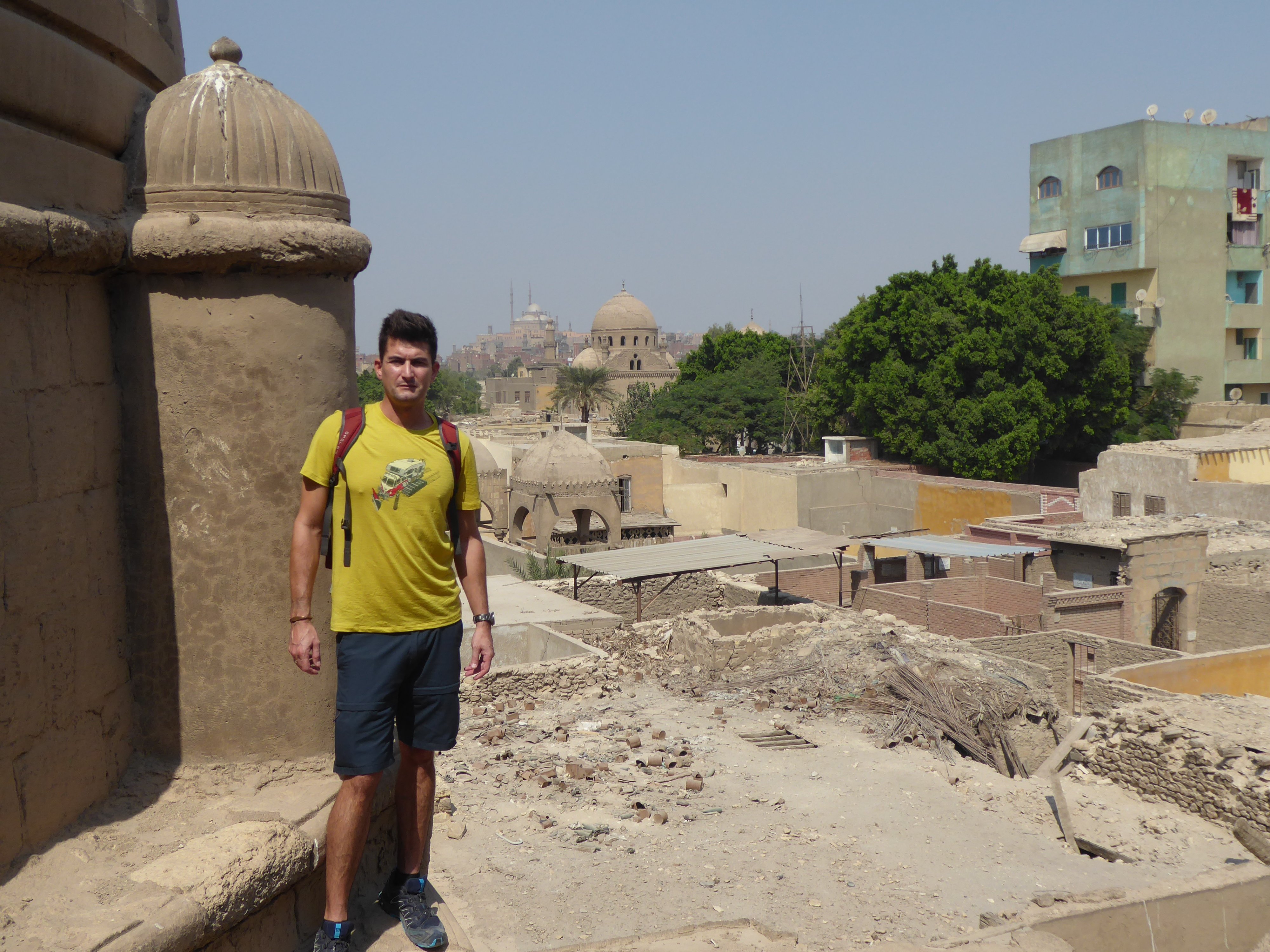

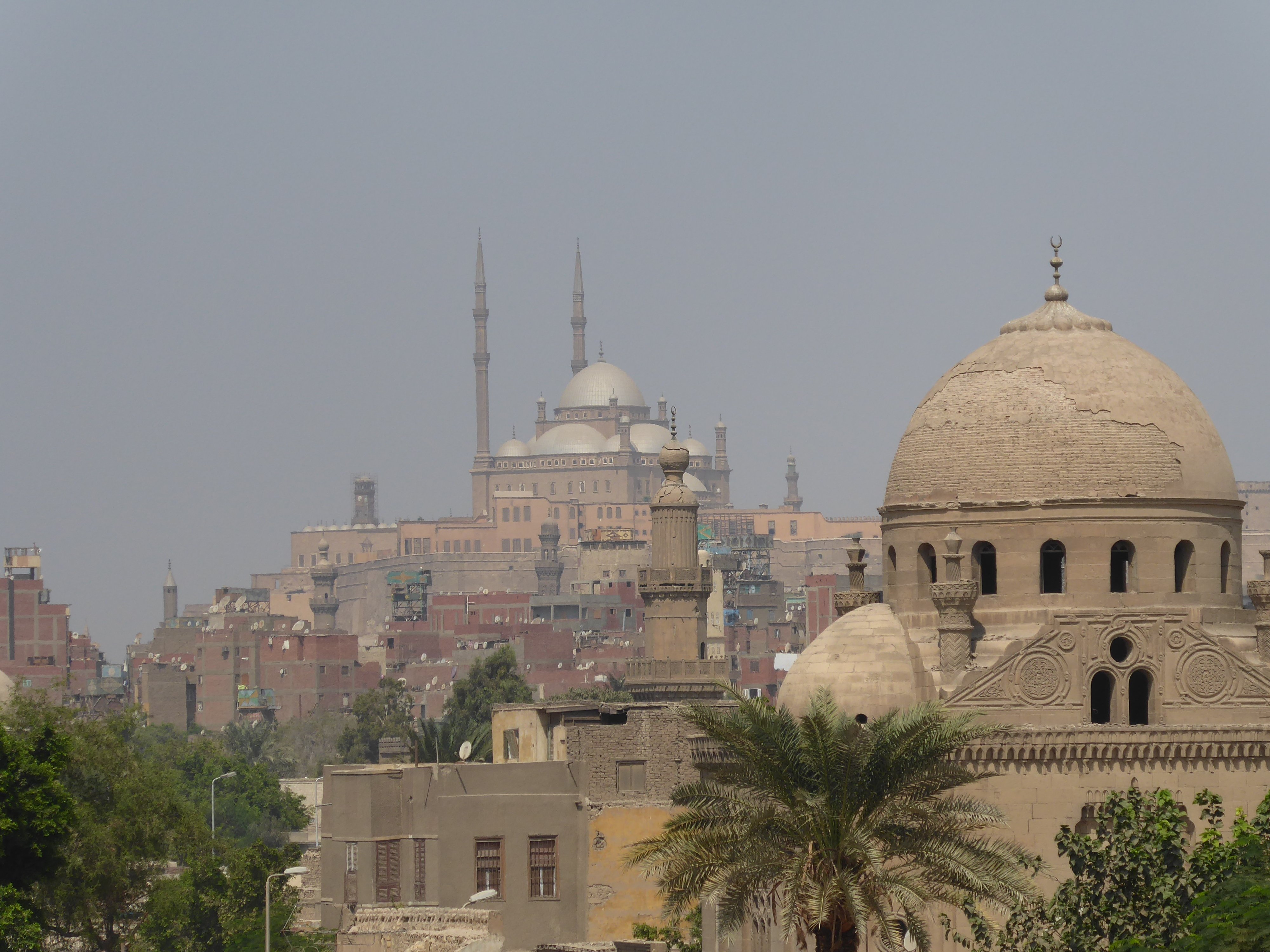

Coptic Cairo
What astonished me during my time in Cairo was the amount of Christian churches, mostly Coptic. Maybe it is just me but Western media has led me to believe the contrary. They are not hidden away in the corners of the city they stand prominent in abundance throughout the city and are part of its fabric and also high on the list of tourist attractions. My visit to this area was only brief with lots to see on the day, first stop was the necropolis; mostly Christian graveyard but not exclusive.
Coptic Orthodox Church of St. Barbara
Can be found within the area amongst little alleyways filled with tourist and religious memorabilia in what would have been the Eastern part of the Babylon Fortress. Built sometime between the 5th & 6th Century AD and added to and change over the centuries the last major changes were made in the 11th Century. Named St. Barbara after her remains where brought to the church in the mid-11th Century, it is filled with many relics and those that are no longer there are in the Coptic Museum just around the corner.

With links to Jesus and his Mother Mary’s time in Egypt whilst in exile there are a significant number are artefacts/relics related them and the extended family.
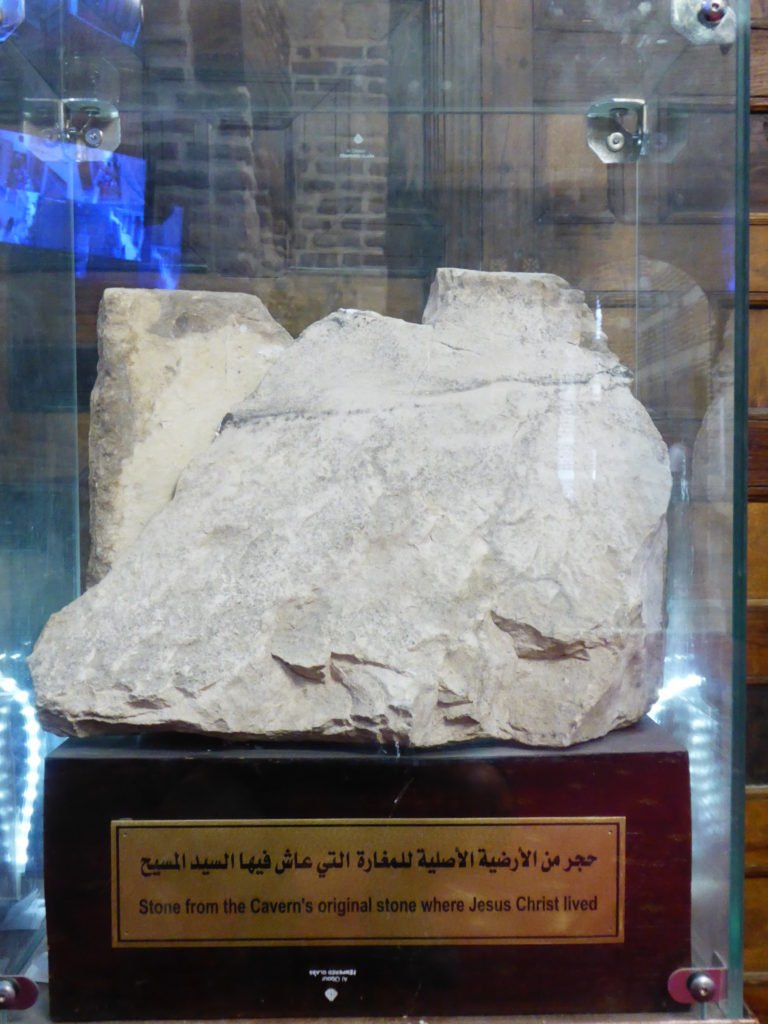
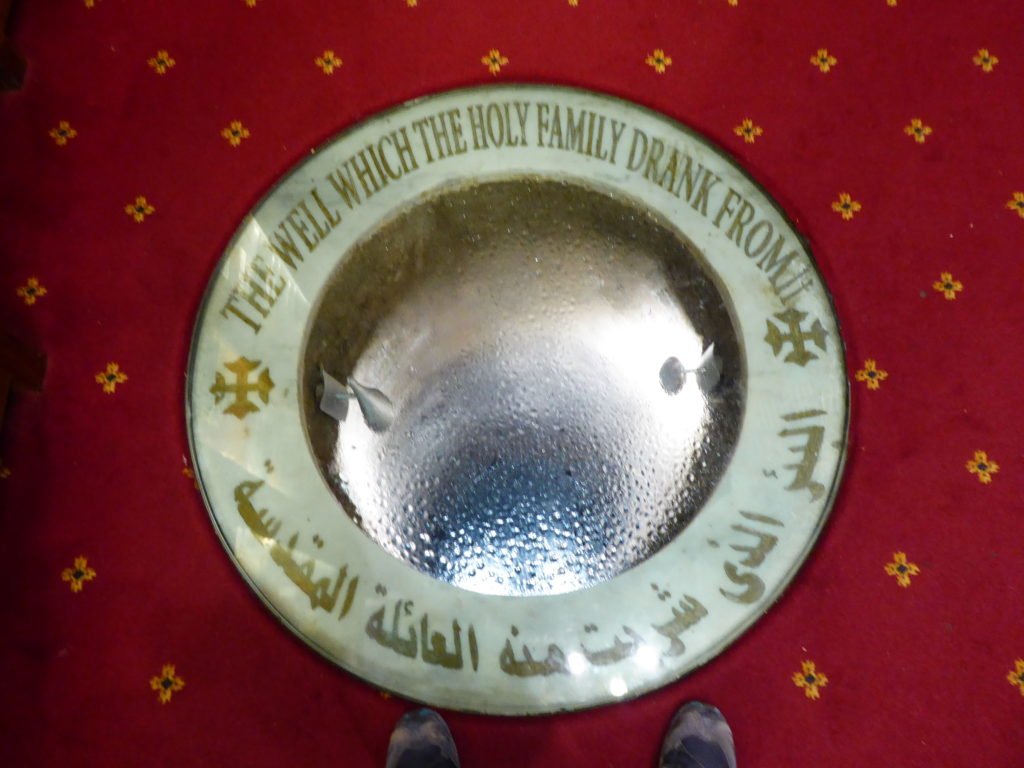
Coptic Museum
This is a great little museum covering the Coptic history of the area which I had no idea was so vast! The old architecture and displays spanning 2000 years and the piece de resistance is the oldest copy of the book as Psalms dating back to the 4th century, it may even be the oldest book ever; bound in wood and leather it was buried under a child’s head.
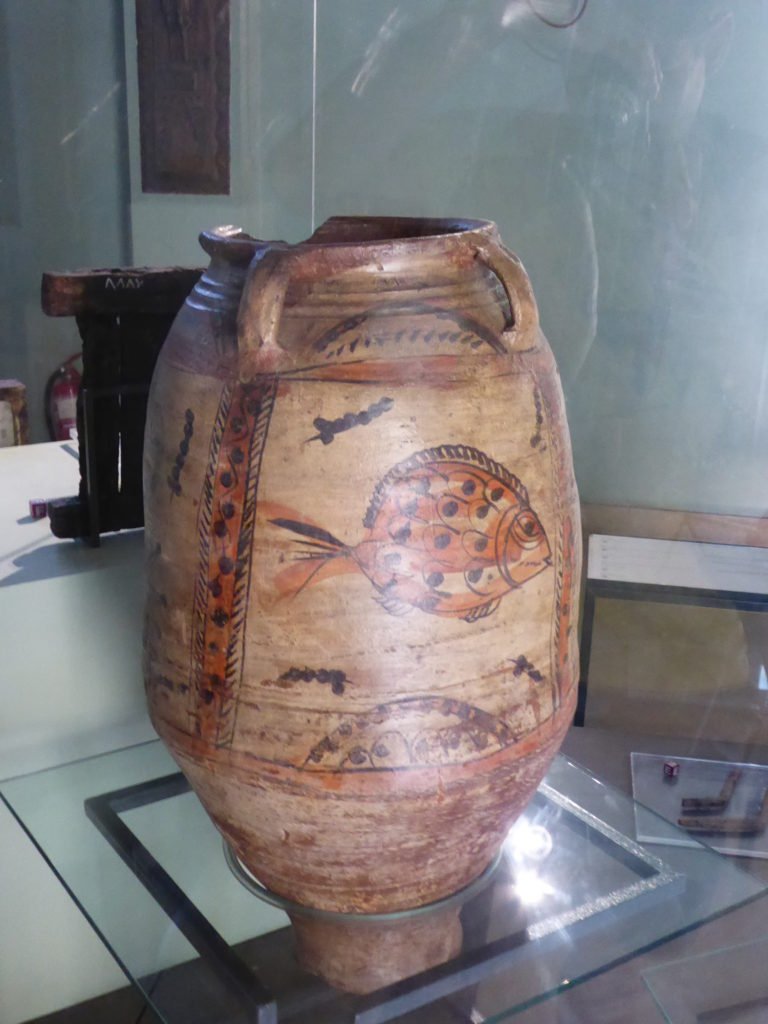



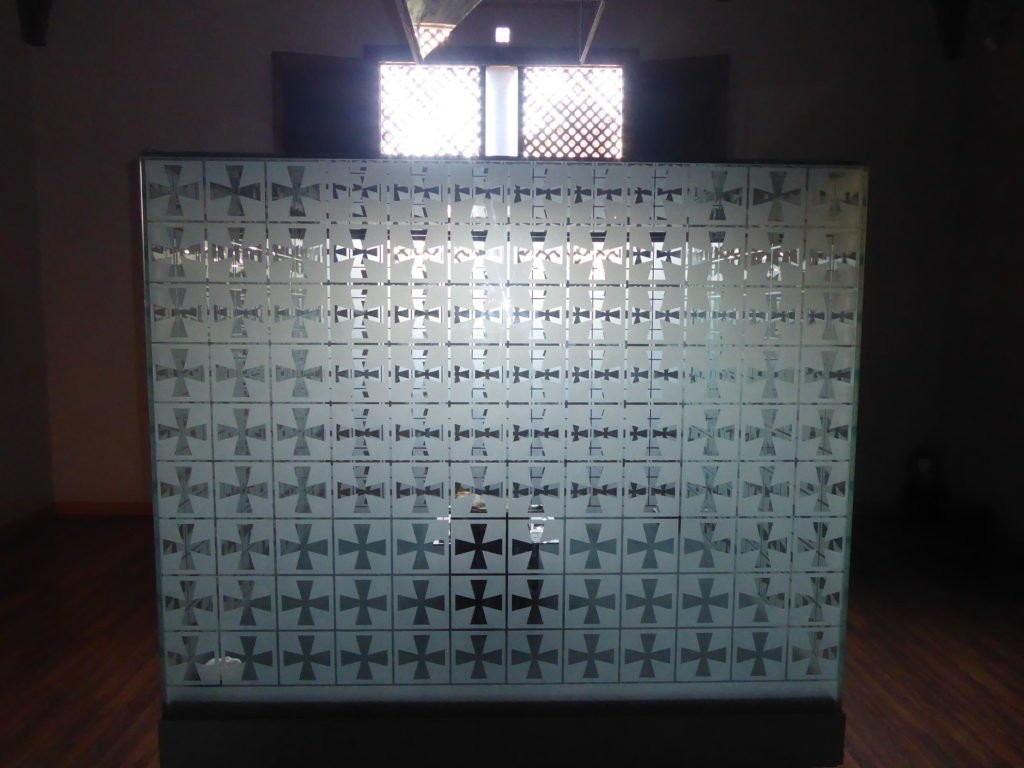
Babylon Fortress
The fortress is not longer with parts of it incorporated into the Coptic area, only part of one of the turrets remains in situ which is just in front of the Church of St George. What used to be a fortress city and the dividing point between Lower and Middle Egypt it was a strategic location was likely built in the mid-500 BC and changed and added to throughout the centuries – what remains today is very much the work of the Romans.
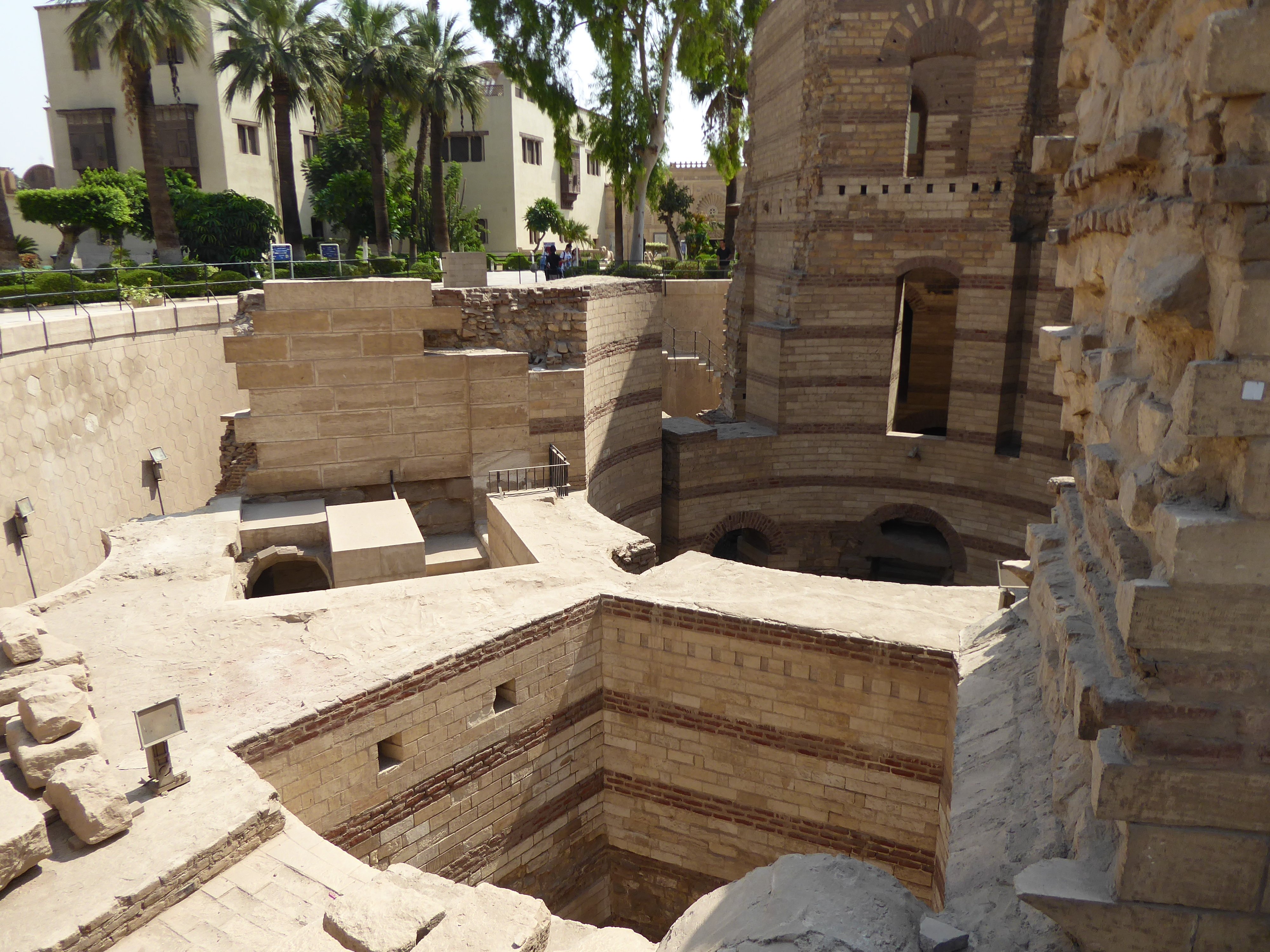
Church of St. George
The current building dates to 1904 but there has been a church at this location from as far back as the 10th Century, maybe long. Obviously looking very new compared to its surroundings it has a unique interior none like I have seen before inside a Christian church. From a distance you could mistake it for a mosque considering the domed roof and location but the cross on top of the dome gives it away.
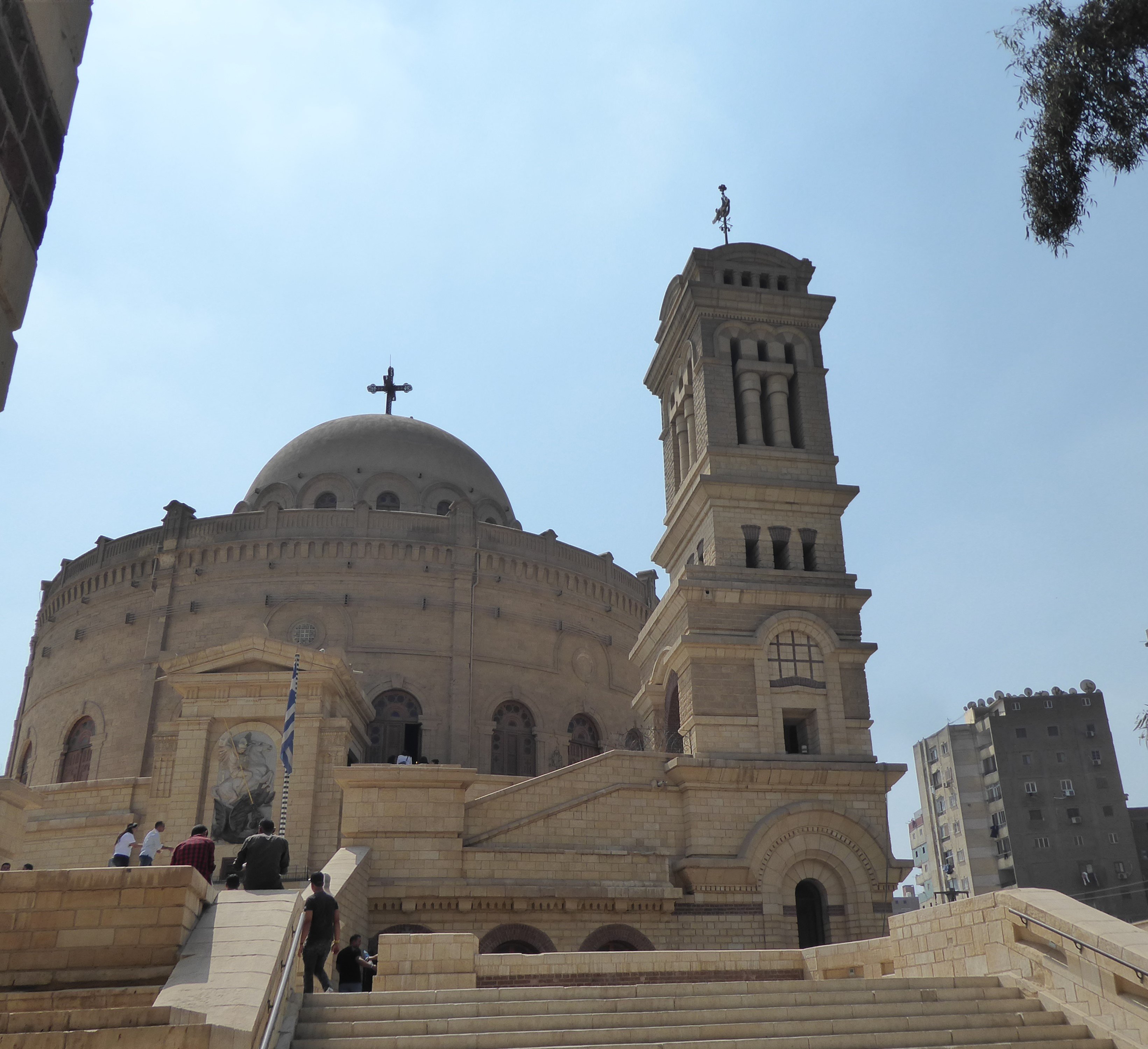
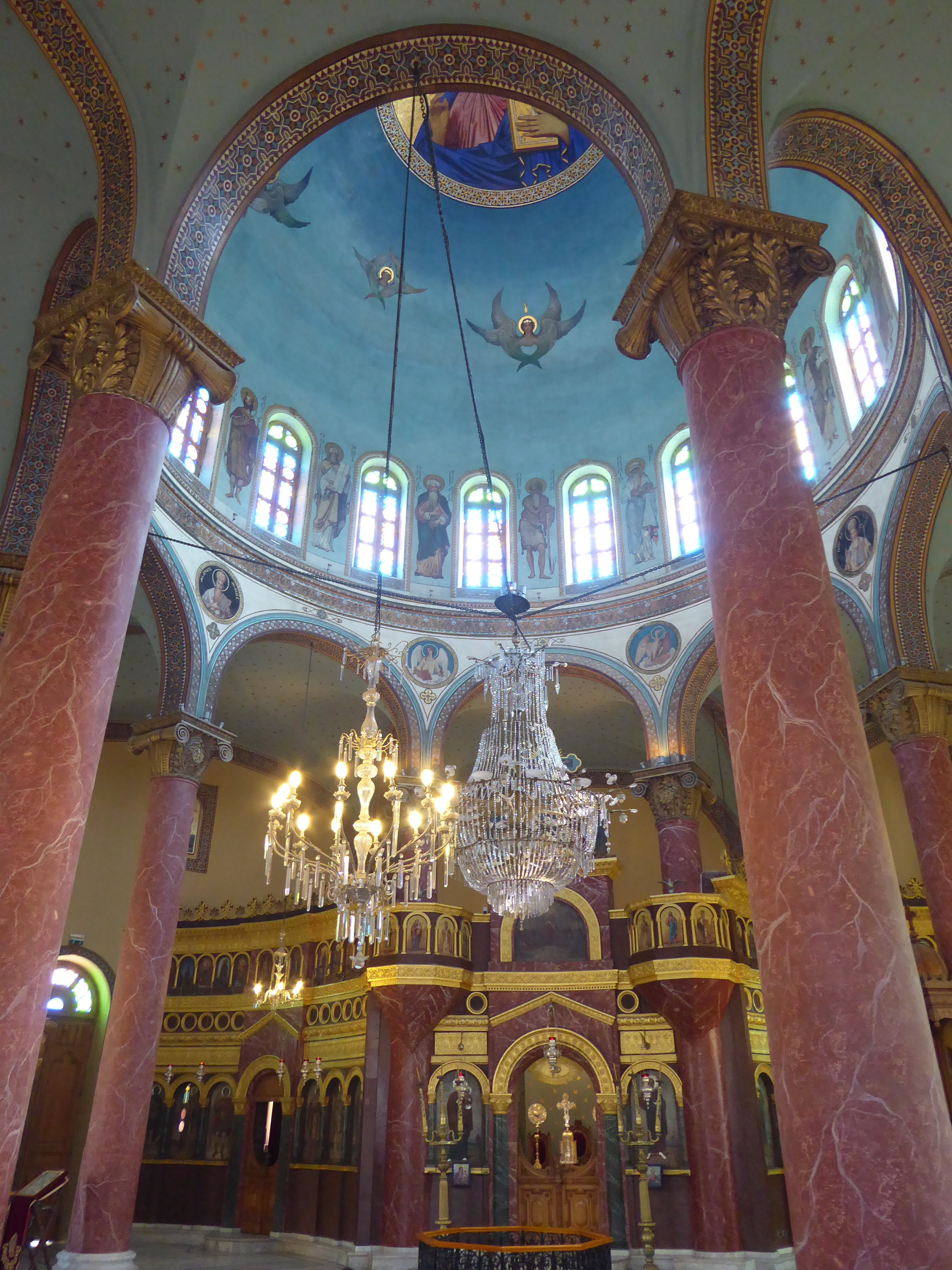
The day was still young but bloody hot so some refreshments were in order, I joined my driver at a side-road cafe…not one I would have gone to if I were not “encouraged” by my driver to do so – the perfect drink to freshen up; Koshary tea with mint, awesome! Next stop was the Citadel, Part 2 of my Cairo blog
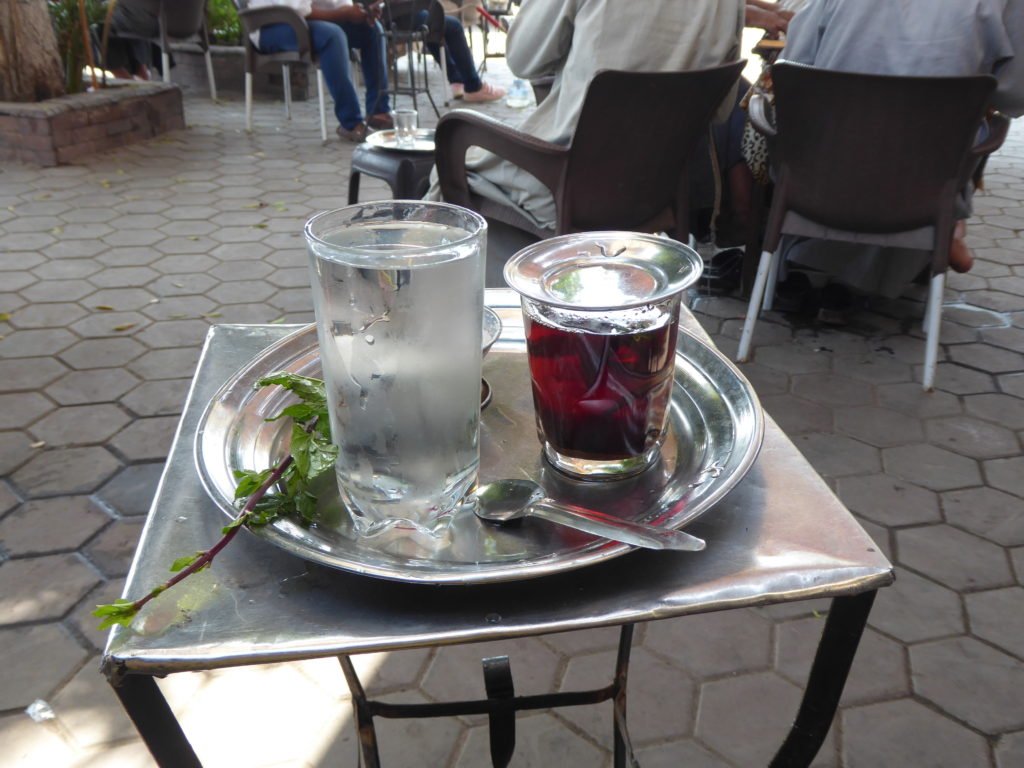
If you haven’t already taken a look, here is my trip to the Giza Pyramids or go to Part 2 of my Cairo visit:

So well written, it makes me want to travel!